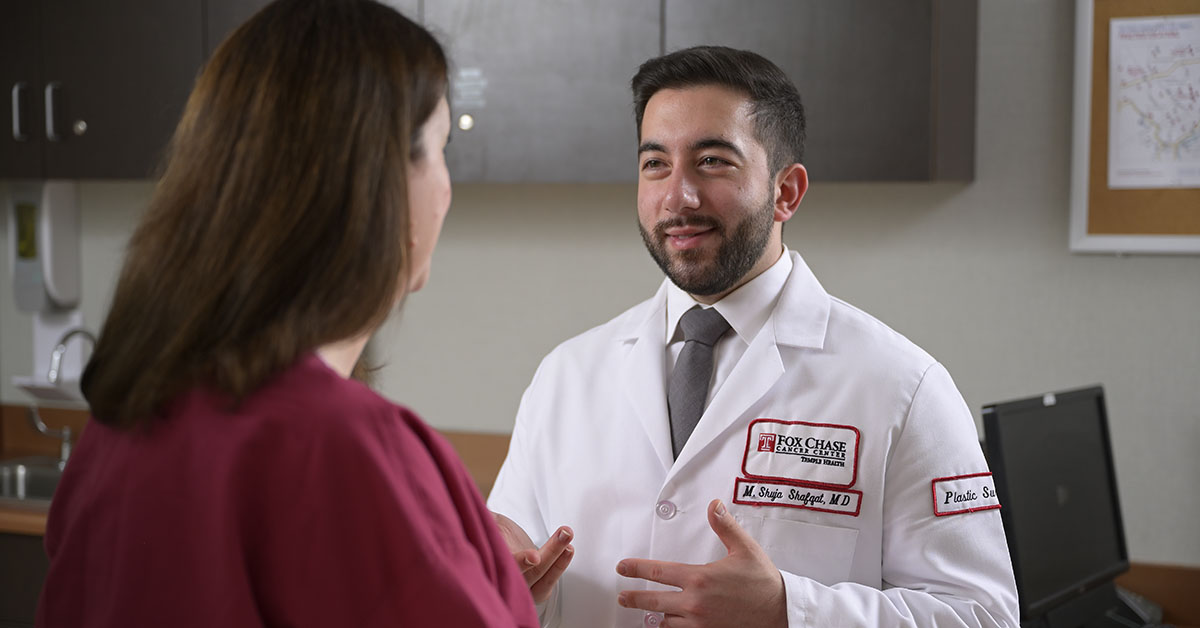
DIEP Flap Technique Offers Patients New Options for Breast Reconstruction
-
Updated: April 6, 2021
Breast cancer patients have many options when it comes to reconstructive surgery after a mastectomy. In recent years, Fox Chase Cancer Center has begun to offer patients a newer option for breast reconstruction, called the DIEP flap procedure, that uses lower abdominal tissues to reconstruct one or both breasts with fewer side effects than other techniques.
What is the DIEP flap procedure?
This breast reconstruction approach transplants the skin, fat and tissue that are connected to the deep interior epigastric perforator (DIEP) artery. As a result, patients have natural feeling and looking breasts and don’t experience muscle weakness that may result from other reconstructive techniques. It also avoids potential complications of silicone gel or saline breast implants, such as leakage or the need for replacement surgery in the future.
The surgery is available with surgeons in Fox Chase's Division of Plastic & Reconstructive Surgery.
In DIEP flap procedures, breast reconstruction is commonly performed at the same operation as the mastectomy. After the surgical oncologist performs a mastectomy, the plastic surgeon transfers the DIEP flap tissues from the lower abdomen to the chest, to reconstruct one or both breasts, and then uses microsurgery to provide blood flow to the tissue.
The procedure is recommended for women who cannot have breast implants because they have previously been treated with radiation or women who have had a recurrence of localized breast cancer. Patients who are extremely thin, or who have scarring from other abdominal surgery may not be eligible for this procedure.
Benefits of the DIEP flap procedure
Less recovery time
M. Shuja Shafqat, MD, a reconstructive surgeon at Fox Chase, said the two most common reconstruction techniques are silicone implants and latissimus dorsi flaps. Silicone implant patients have a shorter initial hospital stay (1–2 days) and a six-week recovery period after the first procedure, which involves inserting a pouch to expand the chest skin over a number of weeks. However, they must have a second surgery to replace the pouch with a final implant, which involves additional recovery time.
In comparison, the DIEP flap technique only requires one surgery, a 3- to 4-day hospital stay, and about an eight-week recovery period.
“The DIEP flap is a more advanced procedure because we can spare all or most of the abdominal muscle,” Shafqat said. “Most patients recover more quickly than with alternative transplant procedures, such as TRAM, and they won’t have long-term problems, such as losing abdominal muscle strength or developing hernias,” he said.
Fewer cosmetic issues
In addition, the technique creates natural looking and feeling breasts, and less scar tissue. It most often allows for fewer cosmetic issues than implants, which have the potential for movement deformity and implant ruptures.
The DIEP flap is becoming an increasingly popular procedure for women facing breast reconstruction after mastectomy, and it’s a technique in which Fox Chase physicians are specializing. As with any other surgical procedure, experience matters.
Learn more about breast reconstruction at Fox Chase Cancer Center.
